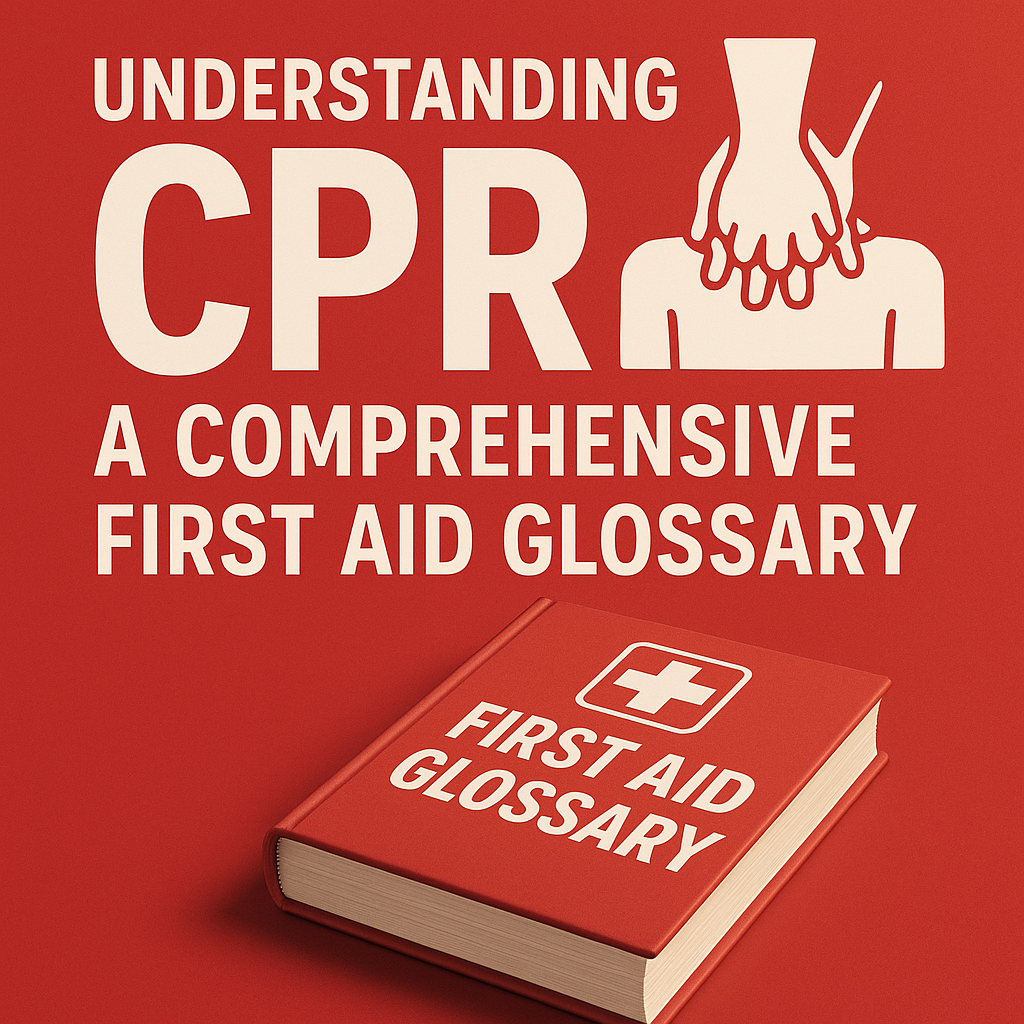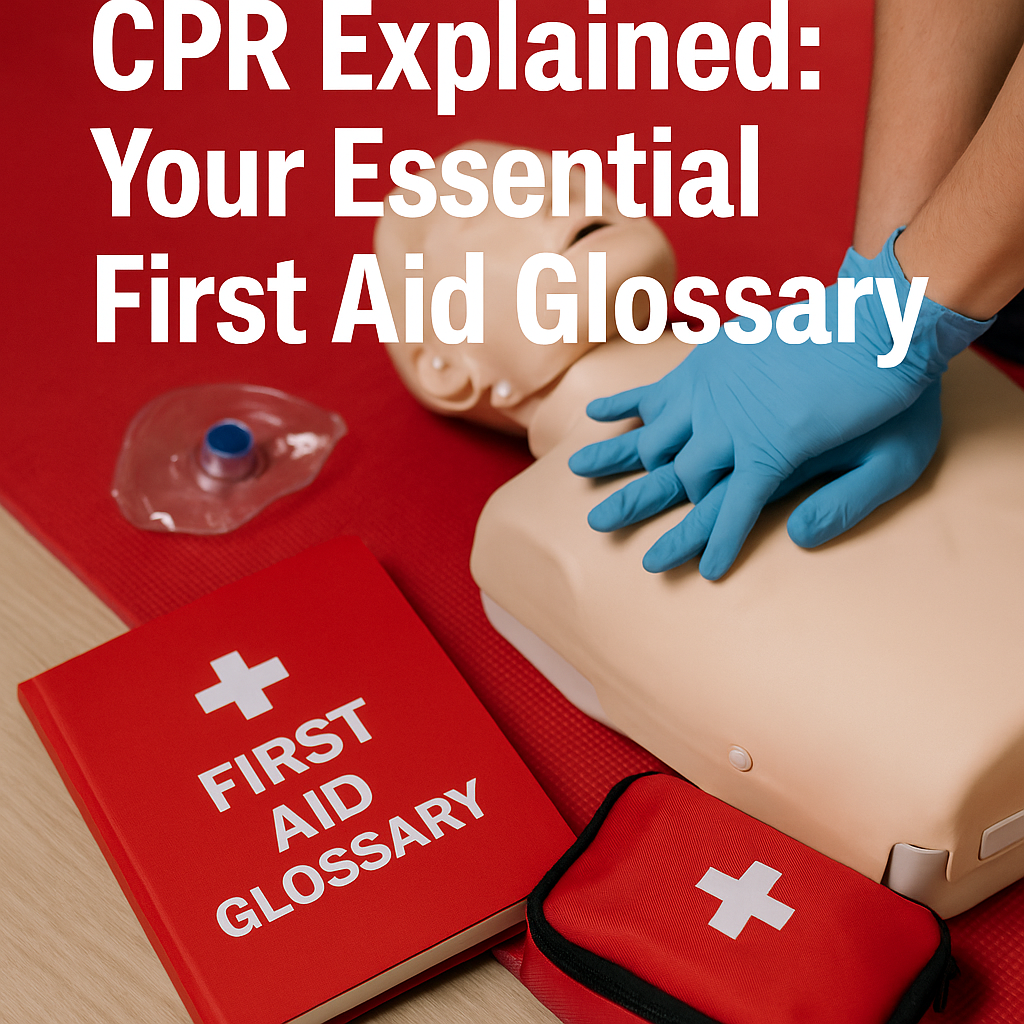- What is CPR?
- Key Facts about CPR
- Causes of Cardiac Arrest
- Step-by-Step Guidance / First Aid Procedures for Performing CPR
- 1. Check for Responsiveness
- 2. Check for Breathing
- 3. Commence Chest Compressions
- 4. Give Rescue Breaths (if trained)
- 5. Continue Until Help Arrives or Person Resumes Breathing
- Trainer Tips / Safety Advice
- Common Mistakes to Avoid
- Expert Recommendations
- Conclusion / Summary
CPR Glossary: Your Comprehensive Guide to Understanding CPR in Australia
What is CPR?

Cardiopulmonary Resuscitation (CPR) is a lifesaving technique used in emergencies when someone’s heartbeat or breathing has stopped. It combines chest compressions and rescue breaths to maintain blood flow to the brain and vital organs until professional medical help arrives. Being proficient in CPR can mean the difference between life and death.
—
Key Facts about CPR
– Purpose: CPR is designed to restore circulation and breathing in individuals experiencing cardiac arrest or severe respiratory distress.
– Importance: Immediately initiating CPR can double or triple chances of survival in cases of cardiac arrest.
– Statistics: According to the Australian Resuscitation Council, approximately 30,000 cardiac arrests occur in Australia each year outside of a hospital setting.
—
Causes of Cardiac Arrest
Understanding the causes of cardiac arrest can enhance awareness of when CPR might be necessary:
– Coronary Artery Disease: The most common cause; involves blocked arteries restricting blood flow to the heart.
– Drowning: Causes a decrease in oxygen intake, leading to cardiac arrest.
– Choking: Blockage in the airway can prevent oxygen from circulating to vital organs.
– Trauma: Severe accidents or injuries can result in cardiac arrest.
—
Step-by-Step Guidance / First Aid Procedures for Performing CPR
Below are detailed, Australian-standard procedures for performing CPR, ideal for those without medical training. It’s crucial to remember that these steps should only be performed on adults; for infants and children, specific guidelines may differ.
1. Check for Responsiveness
– Gently shake the person and ask if they can hear you. If unresponsive, call for help.
– If alone, call 000 for emergency assistance before beginning CPR.
2. Check for Breathing
– Place your ear close to their mouth and look for chest movement. Observe for any signs of normal breathing for about 10 seconds.
– If they are not breathing or breathing abnormally (gasping), commence CPR immediately.
3. Commence Chest Compressions
– Position: Place the heel of one hand on the center of the person’s chest, interlock fingers of the other hand on top.
– Technique: Keep your elbows straight, using your body weight to compress the chest downwards – about 5-6 cm deep.
– Rate: Aim for a rate of 100-120 compressions per minute (about the same tempo as the song “Stayin’ Alive” by the Bee Gees).
4. Give Rescue Breaths (if trained)
– After 30 compressions, open the airway by tilting the head back and lifting the chin.
– Pinch the nose shut, cover their mouth with yours, and blow steadily until you see the chest rise. Give two breaths, each lasting about 1 second.
– Resume compressions immediately, alternating between 30 compressions and 2 breaths.
5. Continue Until Help Arrives or Person Resumes Breathing
– Keep performing CPR until emergency services arrive or the person shows signs of life (e.g., starts breathing normally).
—
Trainer Tips / Safety Advice
Common Mistakes to Avoid
– Failure to Call for Help: Always ensure emergency services are notified.
– Not Checking for Breathing: Make sure to thoroughly check for normal breathing before commencing CPR.
– Inadequate Depth or Rate of Compressions: Aim for adequate depth (5-6 cm) and speed (100-120 compressions per minute) to ensure effectiveness.
Expert Recommendations
– Stay Calm: It’s crucial to maintain composure, as panic can affect your actions and the response of those around you.
– Practice Regularly: Regular training and refreshers in CPR ensure that the technique remains fresh in your mind.
– Use an AED if Available: If an Automatic External Defibrillator (AED) is nearby, use it as soon as possible. It can significantly improve survival rates.
—
Conclusion / Summary
Understanding CPR is essential for everyone, not just healthcare professionals. It prepares you to act decisively in emergencies, potentially saving lives. With the right training and knowledge, you can confidently perform CPR, even in high-pressure scenarios.
Remember, every second counts during a cardiac arrest. The ability to act quickly and effectively increases the survival rate from such emergencies dramatically. Familiarize yourself with these CPR procedures, and consider enrolling in a certified first aid course to practice these skills in a supportive environment.
Stay informed, stay prepared, and become a vital part of your community’s safety. If you’d like further information on CPR training or first aid courses, don’t hesitate to reach out to local training institutions in your area.
—
This CPR glossary is designed to provide clear, actionable guidance based on Australian first aid standards. Refer back to this resource whenever you need a refresher on this critical life-saving skill.

Leave a Reply